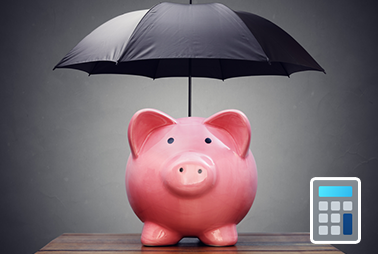Why Emergency Funds Matter
Life is unpredictable. Whether it's a sudden job loss, a medical emergency, or unexpected home repairs, financial surprises can strike when we least expect them. An emergency fund acts as a safety net, providing peace of mind and financial stability in times of crisis. Without one, even minor unexpected expenses can lead to debt or financial stress. In this post, we'll explore how to build an emergency fund, how much you should save, and when to use it.
How Much Should You Save?
One of the most common questions people have about emergency funds is, "How much should I save?" The general recommendation is to have between 3 to 6 months’ worth of living expenses set aside. This amount is usually enough to cover essential expenses like rent or mortgage payments, utilities, groceries, and insurance in case of a job loss or other major financial hit.
However, the exact amount will vary depending on your individual circumstances:
- Job Stability: If you have a secure job or multiple income sources, you may not need to save as much. On the other hand, if you're in a volatile industry or self-employed, you might want to aim for the higher end of the range.
- Family Size: Larger families tend to have higher living expenses, so consider saving more if you’re supporting dependents.
- Health Factors: If you have chronic health conditions or high medical expenses, it’s wise to set aside extra funds for unexpected bills.

Check out our free Emergency Fund Calculator to help you determine how much you might need to save.
Where Should You Keep Your Emergency Fund?
An emergency fund needs to be easily accessible when you need it most. Ideally, you should keep it in a high-yield savings account or money market account that offers quick access without penalties for withdrawals. We provide all our clients access to a high-yield savings account through our custodian, Altruist.
Here’s what to consider when choosing where to store your emergency fund:
- Liquidity: The fund should be easily accessible at any time. Avoid locking it away in long-term investments, such as stocks or real estate, where access may be limited, and market fluctuations could put your money at risk.
- Minimal Risk: Since the primary purpose of an emergency fund is safety, it should not be subject to investment risk. Savings accounts or money market accounts offer security and liquidity, making them the best choices.
How to Build an Emergency Fund
This goal is so important than two of the 8 Norsu Steps for Building Wealth are focused on building an emergency fund. Starting from scratch might seem daunting, but with the right strategies, you can start small and gradually work your way toward your goal.
- Start with a Modest Goal: Saving three to six months’ worth of expenses can be overwhelming, so we recommend starting with $1,000. Even a small buffer can prevent you from going into debt when an unexpected expense arises.
- Automate Your Savings: One of the easiest ways to build your emergency fund is to set up automatic transfers from your checking account to your savings account each month. Even small, consistent contributions can add up over time.
- Cut Unnecessary Expenses: Free up extra cash by cutting back on non-essential spending. Redirect the money you save on dining out, entertainment, or subscriptions into your emergency fund. If you receive a windfall, such as a tax refund or bonus, consider allocating part of it toward your emergency savings.
When (and When Not) to Use Your Emergency Fund
Having an emergency fund is one thing, but knowing when to tap into it is another. It's important to clearly define what qualifies as an "emergency" to avoid using the fund for non-urgent expenses.
What Qualifies as an Emergency?
- Job Loss: If you lose your job or face a significant reduction in income, this is an appropriate time to rely on your emergency fund to cover essential living expenses.
- Unexpected Medical Bills: Medical emergencies can happen at any time, and your fund can help cover costs not paid by insurance.
- Urgent Home or Car Repairs: If your car breaks down or your roof starts leaking, these are situations where an emergency fund can be used to prevent further damage or disruption.
Avoid Using It for Non-Emergencies:
- Vacations or Leisure Spending: It's tempting to dip into savings for a big vacation or new gadget, but resist the urge unless it's truly an emergency.
- Planned Expenses: If you know about an upcoming expense (e.g., holidays, home renovations), plan and save for it separately. The emergency fund should be reserved for unforeseen costs.
How to Replenish Your Emergency Fund
After you’ve used your emergency fund, it’s crucial to replenish it as soon as possible. Here’s how you can get back on track:
- Pause Non-Essential Spending: Once the emergency has passed, temporarily reduce non-essential expenses to quickly rebuild your savings.
- Adjust Automatic Transfers: If you depleted a significant portion of your fund, consider increasing the amount of your automatic monthly transfers to replenish it more quickly.
- Use Bonuses or Windfalls: Any extra income, such as a tax refund or bonus, can be allocated directly to your emergency fund until it’s back to your desired level.
Build Your Safety Net Today
An emergency fund is a cornerstone of financial security. Whether you're dealing with a job loss, medical emergency, or sudden repair, having savings in place ensures you can handle life's unexpected expenses without derailing your financial goals. Start small if you have to, automate your savings, and stay committed to building a fund that will protect you and your family in tough times. Take a moment today to evaluate your current savings and set a plan in motion to start or strengthen your emergency fund.